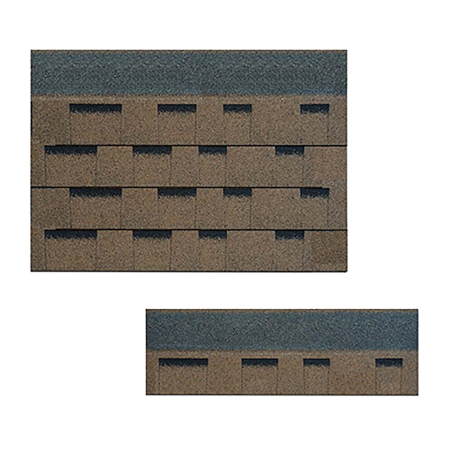
Sht . 28, 2024 03:03 Back to list
Choosing the Right Ridge Cap for Your Asphalt Shingle Roof Installation
Understanding Asphalt Shingle Roof Ridge Caps
When it comes to roofing materials, asphalt shingles remain one of the most popular choices among homeowners and builders alike. They are known for their durability, affordability, and ease of installation. However, one crucial component often overlooked is the ridge cap, which plays a significant role in the overall performance and longevity of asphalt shingle roofs.
What is a Ridge Cap?
A ridge cap is a specialized roofing material that covers the ridge line of a sloped roof, where two roof planes meet. This area is particularly vulnerable to the elements, as it is exposed to wind, rain, and other weather factors. The ridge cap serves not only as a protective barrier against these elements but also enhances the aesthetic appeal of the roof.
Importance of Ridge Caps
1. Weather Resistance Ridge caps help prevent water infiltration at the peak of the roof. Without proper capping, rainwater can seep into the seams, leading to potential leaks and water damage in the attic or interior of the home.
2. Ventilation Many ridge cap systems are designed to allow for proper airflow within the attic space. Adequate ventilation is crucial in preventing heat buildup and moisture accumulation, which can contribute to mold growth and premature wear of roofing materials.
3. Aesthetic Appeal The ridge cap provides a finished look to the roof. Available in various colors and styles, it can enhance the overall appearance of the home, giving it a polished and complete look.
4. Protection Against Wind Damage The ridge is one of the most wind-exposed areas of the roof. A well-installed ridge cap can help secure the shingles underneath, preventing them from being lifted or torn away during strong winds.
Types of Ridge Caps
asphalt shingle roof ridge cap

Asphalt shingles can be used for ridge caps, but there are also specialized ridge cap shingles designed specifically for this purpose. These often come in a pre-cut style that makes installation simpler and more efficient. Additionally, there are vented ridge caps available that allow for enhanced airflow, making them ideal for homes in warmer climates where attic ventilation is essential.
Installation Tips
Installing a ridge cap requires precision and attention to detail. Here are a few key steps to ensure a successful installation
1. Preparation Before installing the ridge cap, ensure that the underlying shingles are properly secured and without damage. If any shingles are loose or compromised, they should be replaced or repaired first.
2. Cutting If using standard asphalt shingles for the ridge cap, cut them to the appropriate length. Typically, each shingle should cover the ridge and extend slightly down both sides for maximum coverage.
3. Nailing Nails should be driven in a specific pattern to secure the ridge caps effectively, usually placing them just below the top edge of the shingle to ensure they are hidden from view.
4. Sealant Applying a bead of roofing sealant beneath the ridge cap can provide an additional layer of protection against water infiltration.
Conclusion
In summary, the ridge cap is an essential component of an asphalt shingle roof that should not be overlooked. It provides weather resistance, enhances ventilation, adds to the aesthetic appeal, and protects against wind damage. Understanding its importance and ensuring proper installation can lead to a longer-lasting and more reliable roofing system.
-
Stone Coated Metal Roof Tile-Nosen Tile: Durable & Stylish Roofing
NewsJul.23,2025
-
Durable Tiles Made of Clay for Modern Cladding Solutions
NewsJul.22,2025
-
Stone Coated Roman Tile Metal Roofing - Durable & Elegant
NewsJul.22,2025
-
Premium Roofing Granules for Sale - High Durability & Cost-Saving
NewsJul.21,2025
-
Durable Laminated Shingles for Weather-Resistant Roofing
NewsJul.21,2025
-
Rubber Roofing Shingles - Durable & Weatherproof SBS Rubber Asphalt Shingles for Homes & Businesses
NewsJul.08,2025







